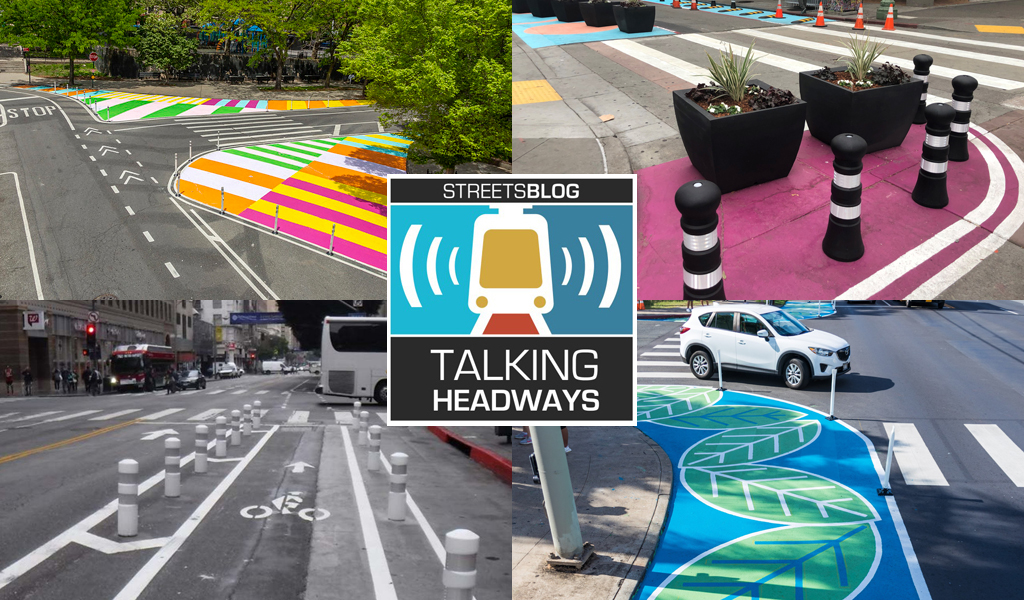This week, we’re joined by Heidi Simon, director of Thriving Communities at Smart Growth America, who talks about lessons learned from Complete Streets Leadership Academies as state and local officials and advocates work to create safer streets through quick build projects.
But let's face it, some of you prefer to read, so click here for a full, AI-generated transcript. Plus, there's also an excerpt below the cool player.
Jeff Wood: Now, how long does it really take to get a permit from a state DOT?
Heidi Simon: That varies greatly. And I think one of the benefits that we saw in doing this program was that we had the state DOT at the table from the beginning, so there were some quick turnarounds on permits that I don't know we would've gotten otherwise. But one of the things that this program identifies is a need for a change in the way we permit things like quick-build demonstrations. If we want quick builds to be something communities can do, whether alone or in partnership with their state DOTs, we need to make it easier for them to get the approval to do so.
Jeff Wood: That makes a lot of sense. We're seeing this in LA with housing right now. The mayor signed an executive order that said, "OK, you shouldn't have to wait more than 60 days if you're under the zoning code and all that stuff." And now all these people are proposing affordable housing projects without any subsidies. Whether that gets built, we'll find out. But I find that ministerial difference huge, and permitting feels like one of those things where state DOTs kind of get in the way of progress in changing streets in a quick manner to fix the things that ail us.
Heidi Simon: And we're not suggesting that there shouldn't be permits, but I think some solutions were identified in the program. So some of the communities, like the ones in California, did a lot of meetings and conversations, but they called pre-permitting meetings. So by the time the permit got to the desk, everyone knew what was in it. The application could be passed along fairly quickly because it had been put together in partnership. I think another possible strategy that we saw that worked well was in Connecticut where they had the different offices within the DOT that had to sign off on the permit, review it at the same time.
So it wasn't a matter of going from desk to desk to desk to desk to desk. It streamlined the process a little bit. Looking back on all of this, I think there are things that if a state was serious about incorporating quick build demonstrations that they could do to help the permit process before the permit ever got to their table. Looking at a list of pre-approved materials, for example, or a pre-approved list of type of projects that maybe get to the front of the line of the permitting a little bit faster and more efficiently.
Jeff Wood: Was there anything else you learned in terms of how these states and cities can work together in this way to make things faster, quicker, to make things more efficient?
Heidi Simon: I think communication is key here. And recognizing that while everyone has a job to do, the ultimate goal needs to be the same. And that needs to be improving safety and accessibility, making sure that people can get to the grocery store, to the school or get to work without having to sacrifice. And I think with that in mind, people are at the table together in a different mindset than maybe coming at it from a defensive standpoint or looking at someone as an adversary versus a partner.
Jeff Wood: Now there's also this kind of issue of capacity in smaller towns. How much does the local capacity impact how much can be done on some of these projects?
Heidi Simon: I think it's a factor, and I think it's not only in smaller towns, but I think even in larger communities there are competing priorities. There are any number of projects that are underway at the same time. And while quick build demonstrations maybe temporary, they require work and they require staff capacity and resources and time. The materials require time to be procured and shift before you even reach installation. And I think when you talk about navigating all of those pieces, it's really an opportunity for states to provide and step up in partnership to some of these smaller local communities.






